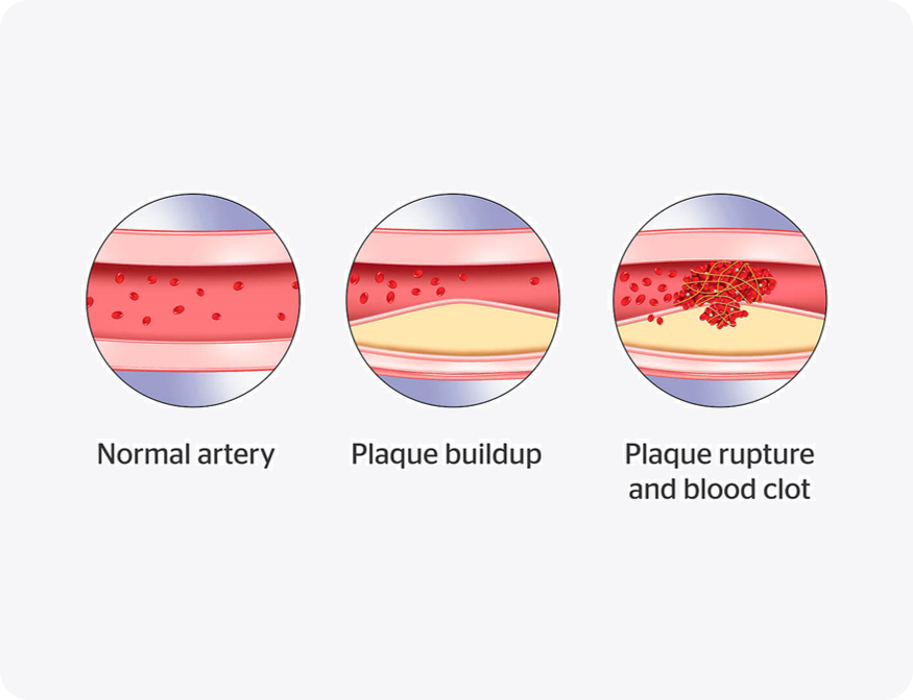Coming soon for patients taking XARELTO® (rivaroxaban): Janssen CarePath for XARELTO® and Janssen Select will transition to XARELTO withMe. We are simplifying access to our patient support in one location with a new name and look. Savings card and coverage gap benefits will not change.
What is PAD?
PAD affects up to 12 million Americans. It is a progressive condition that is the result of a process called atherosclerosis, where plaque builds up inside the arteries that supply blood to the limbs, usually the legs, and causes pain when walking.
Understanding PAD could help lower your risk for blood clots
People with PAD have a high risk for blood clots due to a rupture of plaque in the arteries.

When plaque ruptures and forms a blood clot, it can cut off blood flow to the limbs, creating a serious blockage that may lead to amputation if left untreated. People with PAD also have an increased risk of having a life-threatening heart attack or stroke.
Treatments for PAD
Common treatments for PAD include certain procedures to restore blood flow to your limbs:
- Peripheral artery bypass graft surgery
- Stent implantation
However, even with a stent procedure, you’re still at risk for life-threatening blood clot–related events like heart attack and stroke. Your healthcare professional may prescribe medicines to help reduce your risk for blood clots. Although many people with PAD take only a daily aspirin, it may not be enough to reduce the risk of heart attack or stroke.
The role of blood thinners with aspirin
Your healthcare professional may prescribe a blood thinner in addition to your daily aspirin to help reduce your risk for blood clots that can cause a heart attack, stroke, or cardiovascular death.
What’s next?
Read Learning About XARELTO® for more information about how XARELTO® works with low-dose aspirin* to help reduce your risk for life-threatening blood clots related to PAD.
*Low-dose aspirin = 75 mg–100 mg once daily.


